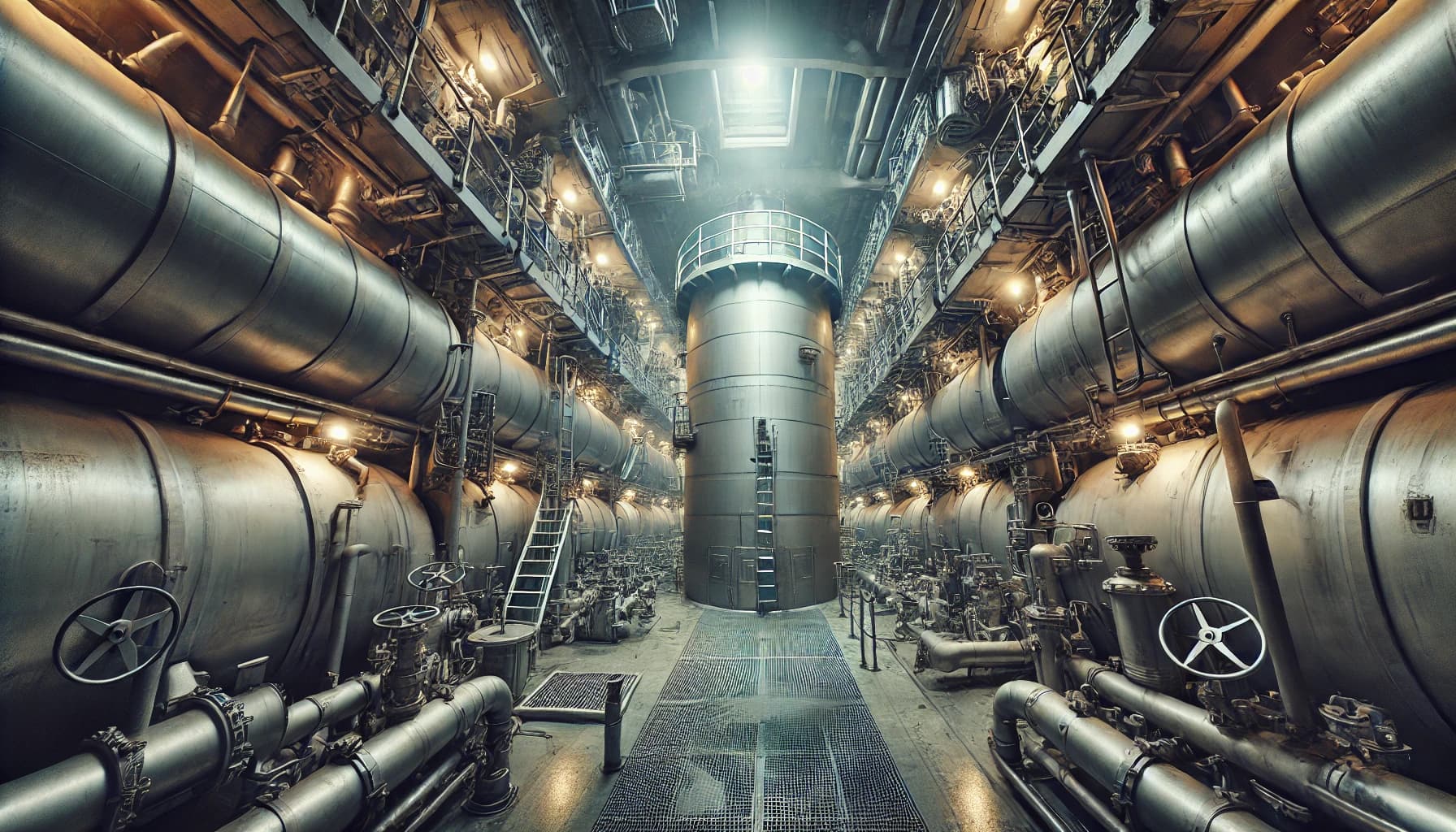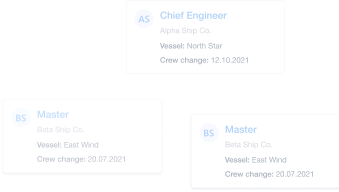We’re continuing our series of blog posts that explore nautical terms and their meanings. We’ve already covered the letter A, so naturally we thought there must be some interesting maritime words that begin with the letter B.
We think we’ve found more than a few for you, so why not take a look! And don’t forget to follow the links if you want to take a look at some of these shipping terms in more detail.
From BIMCO to buoy tenders: Nautical terms beginning with B
BIMCO
BIMCO is the Baltic and International Maritime Council, a commercial shipping trade organization and the largest international direct-membership organization for shipowners, shipbrokers, charterers and agents in the world.
Back-up Navigator
A Back-up Navigator is not an actual job, but the name given to a member of the crew, (usually an Officer) who has been assigned by the Master to be on call in the event that assistance is needed on the bridge.
Backhaul
A backhaul is when a vessel returns from her original destination to the original point of departure.
Read more: Nautical Terms That Begin with the Letter D
Backstay
A backstay is a long line or cable that runs from the rear of the vessel to the mast heads. Backstays help to support the mast.
Bagged Cargo
Bagged cargo is any type of cargo that is normally packed in bags or sacks - such as cement, grain, flour, sugar, powdered milk etc.

Bale Capacity
The bale capacity is the total amount of space available for the carriage of bales, bags, pallets or boxed cargo, excluding the space between the frames and beams. The Bale Capacity is always slightly less than the Grain Capacity.
Ballast
Ballast is any solid or liquid weight that is brought on board a vessel in order to increase stability. For example, if the cargo in one hold is heavy and the cargo in another hold is lighter, ballast will be used to balance out the weight discrepancy.
Ballast is also used if there are rough seas ahead or when the ship is empty of cargo.
Read more: Nautical Terms That Begin with the Letters E & F
Ballast Keel
Ballast keel is a quantity of ballast which is secured by bolts to the keel to increase a boat’s stability.
Ballast Movement
If a cargo ship needs to sail without cargo, or with only a small quantity of cargo, it needs to travel in ballast. Generally this means carrying sea water in the ballast tanks to keep the vessel in trim and to ensure that the propeller and rudder are submerged.
A Ballast Movement is the voyage, or leg of a voyage, spent under these conditions.
Ballast Pumps
Ballast pumps are electrically-powered and used to pump water in and out of the ballast tanks when cargo is being loaded or unloaded.
Read more: Nautical Terms That Begin with the Letters G, H & I
Ballast System
A ballast system consists of ballast pumps and piping and enables water to be drawn from the sea or from a ballast tank and then discharged to another ballast tank or into the sea.
Ballast Tank
A ballast tank is a watertight compartment that is used for holding ballast water.

Ballasting
Ballasting is the process in which seawater ballast is pumped into ballast tanks to achieve a vessel’s desired stability, trim and draught.
Bareboat Charter
A bareboat charter (also called a demise charter) is an agreement in which a vessel is chartered - or hired - without crew or provisions. The renter of the boat or ship takes care of these things themselves.
Read more: Nautical Terms That Begin with the Letters J, K & L
Barge
A barge is a flat-bottomed boat which is used to transport bulky freight such as sand, coal, stone or lumber etc. by canal or river.
Barge Aboard Catamaran
A Barge Aboard Catamaran (BACAT) vessel transports barges which are loaded on and unloaded off, whilst it is floating. This is done by partially submerging the BACAT and loading the barges on via a gate in the BACAT's stern.
Barge Carrier
Barge carriers are ships that are designed to carry barges. The barge is loaded onto the carrier either by floating it on to the partially submerged carrier through a gate in the stern or by lifting it over the stern using a gantry crane.
Battens
Battens, or cargo battens, are inserted into the hold of a cargo ship to keep cargo away from the vessel's sides in order to allow ventilation.
Read more: Nautical Terms That Begin with the Letter M
Bays
A bay is a space on a cargo ship that is meant for holding containers. A container ship will have several bays, all of which are either under-deck (the hold) or on-deck.
A numbering system enables ordered loading and unloading, with even numbered bays being suitable for 40-feet containers and odd numbered bays being for 20-foot containers.
Beacon
Also known as sea marks, seamarks and navigation marks, a beacon is an aid that is fixed to the shore (i.e. a lighthouse) or to the seabed to help navigators and pilots identify the approximate position of a maritime channel or hazard to allow them safe passage of their vessel.

Beam
Also called breadth, the beam is the width of a vessel.
Read more: Nautical Terms That Begin with the Letters N & O
Before Breaking Bulk
Before Breaking Bulk is an expression that means making freight payment before a shipment of goods is discharged. Under typical circumstances, freight is paid once the goods have been delivered, however, in the event of Before Breaking Bulk (BBB), freight must be paid before the vessel is allowed to leave port.
Bell
The ship's bell is used to announce the time, as an alarm in the event of an emergency, and, its most common use these days, as a safety signal when the vessel is in foggy conditions. A bell usually has the ship’s name engraved on it and is most often made from bronze or brass.
Berth
Berth is a place assigned to a vessel when she is at anchor or is lying alongside a dock or pier etc. A berth is also a bunk or bed on a ship.
Berthing
Berthing is the act of approaching a port or harbor and securing the vessel in its assigned place - i.e. its berth.
Bight
A bight is a loop or bend in a rope.

Bilge
A ship’s bilge is the lowest inner part, or the bottom part of the hull that would rest on the ground if the vessel was not supported by water. It encompasses the lower parts of the holds and machinery spaces and is designed to collect excess water.
Bilge Blocks
Bilge blocks are used to support the bilge while the vessel is under construction or in dry-dock.
Read more: Nautical Terms That Begin with the Letter P
Bilge Keel
A bilge keel is a passive stability system that is used to reduce a vessel's tendency to roll. Bilge keels are used in pairs, one for the port side, and one for starboard. On rare occasions a ship may have more than one bilge keel per side.
Bilge Pump
A bilge pump is a water pump that is used to drain bilge water from a vessel. Many electric bilge pumps are fitted with float switches which activate the pump when the bilge fills to a specified water level
Bilge Water
The name given to water that collects in a vessel’s bilge. Bilge water is pumped out due its tendency to become foul smelling and putrid. Bilge Water also contains other fluids such as those from internal drainage systems, machinery, sludge tanks and other sources.
Bill of Lading
A Bill of Lading (BL, B/L or BoL) is a legal document that is issued by or on behalf of a carrier detailing the type and quantity of goods being shipped, the shipper, the consignee, the ports of loading and discharge and the carrying vessel. It also acts as a receipt when the goods are delivered to their destination.
Read more: Nautical Terms That Begin with the Letters Q & R
Blast
An audible signal that is made with a ship’s whistle. A short blast is about one second long, while a prolonged blast lasts for between four and six seconds.

Blind Sector
The blind sector is an area that cannot be scanned by a ship’s radar because the radar echoes are blocked by obstructions near the antenna, such as parts of the superstructure or the masts, etc.
Blue Peter
The Blue Peter is a blue signal flag with a white square in the center. It is hoisted to indicate that a merchant ship is ready to sail.
Boarding Arrangements
Boarding arrangements or boarding facilities refer to the gear required for a pilot (and other personnel) to board a vessel such as pilot and accommodation ladders, gangways and ramps, mechanical hoists, and shell doors.
Read more: Nautical Terms That Begin with the Letter S
Boarding Speed
Boarding speed is the speed of a vessel when it is adjusted to that of a pilot boat so that the pilot can safely embark.
Boat Falls
Boat falls are the tackle used to lower or hoist a ship’s boat or lifeboat to or from the davits.
Boiler
A boiler is a unit that generates steam to propel a ship. Boilers are also used for onboard heating as well as other auxiliary purposes.
Bollard
A bollard is found both on ships and on wharfs/docks. Generally speaking they are metal bases that are welded to the deck of a vessel or fastened to the dock, with two vertical bitts that are welded onto the sides to create a secure fastening for the mooring and berthing lines.

Bonded Goods
Bonded goods are products which must have duty paid on them which has not yet been paid. For example, goods that are in transit or in a warehouse waiting for clearance by customs.
Bonded Warehouse
A bonded warehouse is a storage facility where bonded goods (goods that are waiting for the duty to be paid on them) are stored.
Read more: Nautical Terms That Begin with the Letter T
Boom
On a sailboat, a boom is a long spar (a pole) which runs along the foot of a fore and aft rigged sail. The boom’s main purpose is to make it easier to control the shape and angle of the sail and to ensure the foot is flatter when the sail angle is away from the centerline of the boat.
The boom is tethered by a wire rope or tackle from aloft to its upper end, while its lower end is usually hinged and connected to the mast.
Boottop
Boottop, or bootopping (used by the merchant navy) is a thin strip of paint which runs around a vessel’s hull. Its purpose is to divide the anti-fouling paint which is below the waterline and the paint used on the topsides. It is usually a contrasting color to the two sections it is dividing.
Boss Hub
The boss hub, or propeller hub, is the central portion of a screw propeller to which the blades are attached and through which the propeller shaft end passes.
Read more: Nautical Terms that Begin with the Letters U, V and W
Bosun Store
The Bosun store is a small space in which tools and small hardware items are kept so that the Bosun and his or her deckhands can efficiently carry out day to day repairs and maintenance.
Bosun or Boatswain
The Bosun, also called Boatswain, is the highest unlicensed rating in the deck department. They are in direct charge of all deckhands and take their direct orders from the Chief Officer or Master.

The Bosun’s duties involve looking after the hull and deck of the vessel, making sure these parts of the ship, as well as her anchors, windlasses and other such equipment are well maintained and in good working order.
A Bosun is also responsible for areas such as the Bosun’s store room, the paint locker, and the deck stores where the tools of their trade such as maintenance equipment, tools and supplies are kept.
Boundary Layer
The boundary layer is a narrow layer of moving water that is adjacent to a vessel’s hull as it travels through water.
Bow
The bow is the forward part of the hull of a ship or boat. Under normal circumstances, the Bow will be pointing forward when the vessel is underway.
Bow Thrusters
Bow thrusters are propellers on the bow which are used as maneuvering aids for the vessel. They are located underwater and turn at right angles to the fore-and-aft line. They push the bow sideways in whichever direction they are employed.
Box
Box is a slang word for shipping container.

Breadth
Also called beam, the breadth is the width of a vessel.
Break Bulk Cargo
Break bulk cargo is loose cargo that is carried in drums, on pallets, in bags or in cartons etc. Break bulk or breakbulk cargo is stowed directly in the vessel’s hold, unlike bulk, containerized, or ro-ro cargo. It is carried by break bulk vessels, general cargo vessels, or multi-purpose vessels.
Break Bulk Vessel
A break bulk vessel is a multi-purpose cargo ship designed for the transportation of break bulk cargo - i.e. cargo that is stowed in the vessel's hold in bags, cartons or on pallets
Bridge
The bridge on a ship is a room or platform at the top of a vessel’s superstructure that operates as the command center. All communications and information goes through the bridge and it will be manned by an Officer of the Watch when the ship is underway. It has a clear view on all sides of the ocean and surrounding area.
Bridge Deck
The bridge deck is the deck upon which a vessel's navigational equipment is housed.
Bridge Wings
On some flying bridges there will be bridge wings which are narrow walkways / open areas that expand outwards over the sides of the vessel. These allow an Officer to see the side of the ship while docking, undocking, and working with smaller vessels such as when picking up or dropping off the pilot.
Broken Stowage
Broken stowage is the term given to ‘lost’ cargo space in a vessel’s holds due to a mismatch in the shape of the hull and the shape of the cargo.
Bulk Cargo
Bulk cargo is goods that are brought onboard the vessel in loose form and unpacked. For example, coal, coke, fertilizers, grain, iron ore, cement, phosphate, and minerals - basically anything that can be pumped or poured. The cargo is loaded directly into the ship’s holds. Ships that carry bulk cargo are known as bulk carriers or bulkers.

Bulk Carrier
A bulk carrier, also called a bulker, is a vessel that has been designed to carry loose cargo that is directly loaded into the vessel with no packaging. Cargo can include coke, coal, grain, cement, iron ore, minerals or fertilizers.
Read more: Nautical Terms That Begin with the Letters X, Y and Z
Bulk Container
A bulk container is a shipping container that has been specifically designed for carrying free-flowing dry cargo such as grain, coal, or cement. The cargo is poured into the container via openings in its roof and later discharged through other openings at the end of the container.
Bulkhead
A bulkhead is an upright partition or wall in a ship’s hull which subdivides the vessel’s interior into watertight compartments. In the event of an accident, they reduce the extent to which the seawater can flood the ship, whilst also adding extra strength to the hull girder.
Bulkhead Deck
The bulkhead deck is the uppermost continuous deck of a ship to which all main transverse watertight bulkheads are carried.
Bulwark
The bulwark on a ship is a fore-and-aft vertical plating found directly above the upper edge of the vessel’s side surrounding the exposed deck or decks.
Bunk
A bunk is a bed (or berth) in crew accommodation that is usually built into the cabin.
Bunker
Bunker is the name given to the fuel (oil) used in ships. There are different types of ‘bunker’ and within those types there are also different standards, grades and classifications.

For example: MDO (marine diesel oil), MGO (marine gas oil), MFO (marine fuel oil), HFO (heavy fuel oil) and IFO (intermediate fuel oil). Bunker can also refer to the tank or compartment that the fuel is stored in.
Bunker Delivery Note
The Bunker Delivery Note (BDN) is a document which contains information pertaining to the delivery of fuel to a ship. This includes the vessel’s name, the port the bunkering took place at, the date, the amount and type of fuel, and the supplier’s information.
Bunkering
Bunkering, or to bunker, is the act of supplying a vessel with bunker - i.e. with filling its fuel tanks with fuel.
Bunkering Vessel
A bunkering vessel is a small tanker that is used to load fuel oils (bunker) into a ship’s tanks. It is equipped with fuel pumps and a crane for hose handling for this purpose.
Buoy
A buoy is a seamark (or sea mark) - a floating object that is used as a navigational aid to help sailors identify the navigable limits of channels, their fairways, and sunken dangers such as rocks or shallow ground etc. They can also be used as a reference point for navigation or other reasons.
Buoy Layer
Also known as a buoy tender vessel or buoy laying vessel, a buoy layer is a boat that is used for handling, maintaining and replacing navigational buoys and beacons. Buoy Tender can also be used to refer to someone who does this for a living.
Buoy Laying Vessel
Also known as a buoy tender vessel or buoy layer, a buoy laying vessel is a boat that is used for handling, maintaining and replacing navigational buoys and beacons. Buoy Tender can also be used to refer to someone who does this for a living.
Buoy Tender Vessel
Also known as a buoy layer or buoy laying vessel, a buoy tender vessel is a boat that is used for handling, maintaining and replacing navigational buoys and beacons. Buoy Tender can also be used to refer to someone who does this for a living.
We hope you’ve found some of these nautical terms and words interesting and if you’re looking for more maritime words, why not check out our shipping glossary for more of the alphabet?!
Read the previous blog post in this series: Nautical Terms That Begin with the Letter A
Read the next blog post in this series: Nautical Terms That Begin with the Letter C

Eve Church
Eve is Martide's content writer, publishing regular posts on everything from our maritime recruitment and crew planning software to life at sea. Eve has been writing professionally for more than two decades, crafting everything from SEO-focused blog posts and website landing pages to magazine articles and corporate whitepapers.
UK




